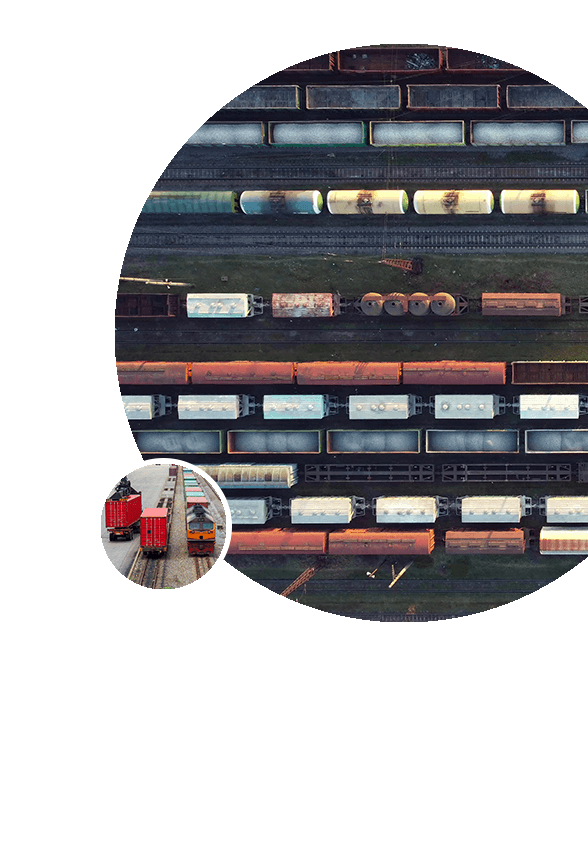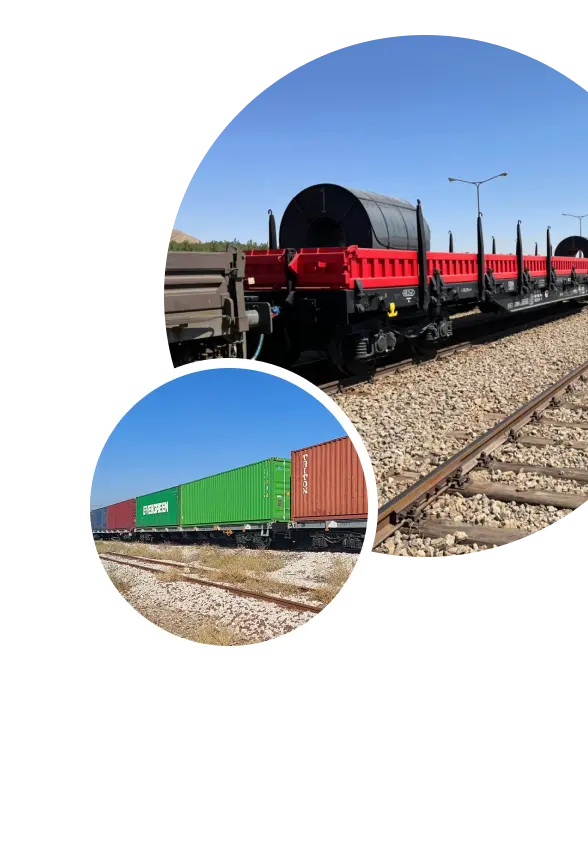OTHER
SERVICES
Inventory
Load Arrangement
Loading
Packing

Inventory
Customs warehouse
Customs warehouses are roofed warehouses, non-roofed warehouses and enclosures, which are installed to store imported and exported goods. Customs control arrangements are made in these warehouses.
The authorized period of storage of goods in customs warehouses is 3 months and can be extended up to 2 months at the request of the owner of the goods or the transport company at the discretion of the customs. If the customs formalities are not carried out within the prescribed period, the goods will be subject to abandoned regulations.
The stopping time of the goods is calculated from the time the goods enter the first customs warehouse.
Clearance of work on perishable goods must be cleared immediately after unloading or transferred to the appropriate customs warehouse, customs will declare the goods perishable if abandoned.
If a clearance document is issued for a good, it must be removed from customs warehouses within 1 month, otherwise it will be subject to abandoned regulations.
In free zones and special economic zones, the deadline for stopping goods is at the disposal of the responsible organizations in these zones.
It is the responsibility of preserving the goods in the customs warehouses with work clearance. The customs clearance is obliged to insure the goods in the customs warehouses and pay the insurance premium at the time of clearance and note the insurance number in the declaration when the goods are delivered.
Customs warehouses accept a good for which a brief declaration of export license, foreign transit, temporary entry, border clearance, return, domestic transit has been issued.
Each goods delivered to the customs warehouses must be immediately registered in the relevant warehouse offices and for each row the list of total cargo (manifest) and each customs license, registration form, written rulings and bill of lading, a separate warehouse receipt and issued to the deliverer To surrender.
Removal of goods from customs warehouses requires customs formalities, otherwise customs smuggling will be declared.
Read More
Customs warehouse receipt
Warehouse receipt or receipt and delivery of goods to the warehouse is a document by which the consignee (warehouseman) certifies the delivery or receipt of goods with specific specifications of the consignee on a certain date of arrival.
According to the provisions of the Law on Customs Affairs and its executive regulations, any goods delivered to customs places or customs warehouses must be immediately registered in the relevant warehouse offices and for each row (article) the list of total cargo (manifest) or declaration or license or minutes of the parliament or The bill of lading is a separate warehouse receipt issued to the deliverer of the goods.
In some cases, the Ports, Maritime and Customs Organization of Iran has delegated its warehousing services duties to qualified private companies in accordance with the Customs Affairs Law and in implementation of Article 44 of the Constitution, and therefore warehouse bills in terms of form and content. It does not have a standard and uniform form, but in all cases the following general specifications must be considered:
Warehouse office row number
freight number
Input border
Warehouse receipt number
Warehouse number
Carrier company
Name of the owner of the goods
Commodity mark
Product Type
Package type
Number
The weight of the goods in detail
Delivery date
And…
The warehouse receipt is issued after the goods enter the warehouse and the inventory is checked, checked and matched with the shipping and delivery documents, and finally the counting sheet (tali) and the preparation and completion of the additional assembly form or unloading deduction (subject of Article 28 of the Customs Affairs Law) are issued.
After issuing the warehouse receipt, it will be delivered to the company in charge of transportation so that it can be delivered to the owner of the goods (consignee).
It is necessary to explain that in the customs of free and special economic zones, separately tradable warehouse receipts are also used.

Load Arrangement
This instruction has been prepared for the use of those who are involved in packing, unloading and loading of goods, inspection of goods and arrangement of containers on top of each other, and also has useful recommendations for them. The most specialized international body IOR expresses its experiences in this field in the following ways:
Road transport drivers, railway personnel and people involved in rail transport, port and warehouse personnel, people in charge of unloading and loading goods, ship crews, people who take goods out of their packages, managers of the cargo and sales department Transport companies and representatives of transport companies in operational locations such as ports, railway stations and road terminals are the topics of this chapter.
If the goods are not packaged properly and the goods are not loaded or unloaded from / to the container, as well as incorrectly stacked containers on top of each other and stacked containers in non-standard areas, etc., there will be risks that are very difficult to compensate or It is impossible.
The provisions of the CSC International Convention must be applied and cited by all of the above factors. IMDG regulations regarding dangerous goods and the contract of life of persons are very important in MULLAS maritime transport. The container is designed to carry a lot of loads and has enough strength. Therefore, improper packaging or any unusual operation that will damage the container will reduce or eliminate the reusability of the container.
The container is the main means of multimodal transport and spends much of its time on the ship. Therefore, knowing the types of forces on the container and goods and the physical conditions inside the container for moisture and humidity and dozens of other factors, full observance of packaging standards, especially for the specific characteristics of maritime transport is very important.

Loading
This instruction has been prepared for the use of those who are involved in packing, unloading and loading of goods, inspection of goods and arrangement of containers on top of each other, and also has useful recommendations for them. The most specialized international body IOR expresses its experiences in this field in the following ways:
Road transport drivers, railway personnel and people involved in rail transport, port and warehouse personnel, people in charge of unloading and loading goods, ship crews, people who take goods out of their packages, managers of the cargo and sales department Transport companies and representatives of transport companies in operational locations such as ports, railway stations and road terminals are the topics of this chapter.
If the goods are not packaged properly and the goods are not loaded or unloaded from / to the container, as well as incorrectly stacked containers on top of each other and stacked containers in non-standard areas, etc., there will be risks that are very difficult to compensate or It is impossible.
The provisions of the CSC International Convention must be applied and cited by all of the above factors. IMDG regulations regarding dangerous goods and the contract of life of persons are very important in MULLAS maritime transport. The container is designed to carry a lot of loads and has enough strength. Therefore, improper packaging or any unusual operation that will damage the container will reduce or eliminate the reusability of the container.
The container is the main means of multimodal transport and spends much of its time on the ship. Therefore, knowing the types of forces on the container and goods and the physical conditions inside the container for moisture and humidity and dozens of other factors, full observance of packaging standards, especially for the specific characteristics of maritime transport is very important
Read More
Customs warehouse receipt
Warehouse receipt or receipt and delivery of goods to the warehouse is a document by which the consignee (warehouseman) certifies the delivery or receipt of goods with specific specifications of the consignee on a certain date of arrival.
According to the provisions of the Law on Customs Affairs and its executive regulations, any goods delivered to customs places or customs warehouses must be immediately registered in the relevant warehouse offices and for each row (article) the list of total cargo (manifest) or declaration or license or minutes of the parliament or The bill of lading is a separate warehouse receipt issued to the deliverer of the goods.
In some cases, the Ports, Maritime and Customs Organization of Iran has delegated its warehousing services duties to qualified private companies in accordance with the Customs Affairs Law and in implementation of Article 44 of the Constitution, and therefore warehouse bills in terms of form and content. It does not have a standard and uniform form, but in all cases the following general specifications must be considered:
Warehouse office row number
freight number
Input border
Warehouse receipt number
Warehouse number
Carrier company
Name of the owner of the goods
Commodity mark
Product Type
Package type
Number
The weight of the goods in detail
Delivery date
And…
The warehouse receipt is issued after the goods enter the warehouse and the inventory is checked, checked and matched with the shipping and delivery documents, and finally the counting sheet (tali) and the preparation and completion of the additional assembly form or unloading deduction (subject of Article 28 of the Customs Affairs Law) are issued.
After issuing the warehouse receipt, it will be delivered to the company in charge of transportation so that it can be delivered to the owner of the goods (consignee).
It is necessary to explain that in the customs of free and special economic zones, separately tradable warehouse receipts are also used.

Packing
One of the methods of packaging products for rail transportation is packaging by jumbo bags. Jumbo bag or big bag is actually the usual plastic sack, which is usually made of polypropylene and is also called polypropylene sack.
Jumbo bag or jumbo bag is used to move and carry heavy and bulky loads from 500 kg to 2500 kg.
If your material is solid and dry in the form of flakes, grains or lumps, this bag is very suitable.
These sacks are easily transported by forklifts in warehouses and factories.
There are 2 or 4 handles on top of jumbo bags, from which the forklift lifts and moves the packages. Every year, more than 500 million tons of products in the world are packed and moved this way.
For example, in Jam Petrochemical, the same bags and forklifts are used to move the packaging of black industrial soot.
Also outside the factory, jumbo bags are transported in the form of 5 or 10 in the back of the truck and are packed on it with a polyethylene cover and straps for transportation.
In this way, this volume of products can be transported in the least possible space.
latest news
Our Products
and Services

Transportation is by rail under certain conditions. Special freight wagons are used to move goods, each of which has a unique function. There are different types of freight wagons in terms of appearance, some of which are mentioned below.

Transportation of goods requires compliance with certain requirements, without which it is not possible to export. In international trade, a good may cross the borders of one or more countries to reach its destination.

Due to its special geographical location, Iran has important ports both in the north and in the south of the country. Sepehran Rail Rasa Company (Private Joint Stock Company) in connection with international transportation and trade affairs provides the possibility of transporting goods from important ports of Iran to all parts of the country.

All operations to be carried out by interested parties and customs in order to comply with customs laws or regulations and instructions relating to the control of persons at the customs border, the clearance of their belongings and furniture, the clearance of goods and what is transported or transited as exports or imports.

Experts and specialists of Sepahran Rail can guide you according to their experience in the field of domestic and international rail transportation.
